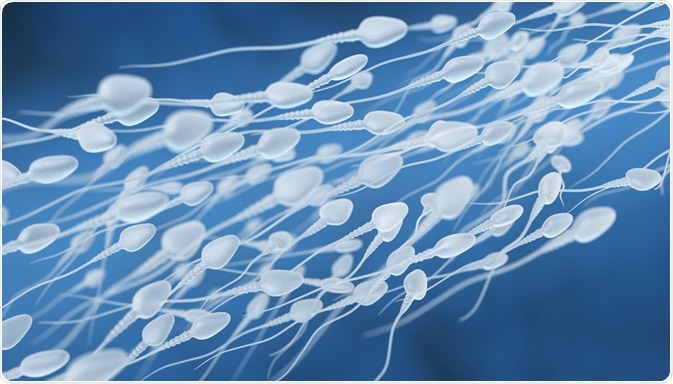Semen is a bodily fluid that is secreted by the gonads of male animals. It contains spermatozoa and fructose and other enzymes that help the sperm to survive and facilitate successful fertilization. During the process of ejaculation, the semen is ejaculated from the seminal vesicle in the pelvis, which is where it is produced.

Amount of semen per ejaculate
The volume of semen released per ejaculate varies. It is estimated that an average of around 3.4 milliliters (mL) is ejaculated at one time. The amount ejaculated can be as high as 4.99 mL or as low as 2.3 mL.
If there is a prolonged gap between ejaculations, the number of sperm in the semen increases, but there is no overall increase in the semen.
Composition of semen
Semen passes through the ejaculatory ducts and mixes with fluids from the seminal vesicles, the prostate, and the bulbourethral glands. The seminal vesicles produce a viscous, fructose-rich fluid. This forms around 65-70% of the semen base.
The white color of the semen is due to secretion from the prostate glands containing enzymes, citric acid, lipids, and acid phosphatase which, taken together, forms around 25-30% of the semen base. At each ejaculation, around 200-500 million spermatozoa are released by the testes. This forms about 2-5% of the semen composition.
The bulbourethral glands produce a clear secretion that helps in the mobility of the sperm cells in the vagina and cervix. In addition, this clear secretion reduces the thickness of the channel that the sperm cells swim through and adds a cohesive, jelly-like consistency to the semen. The glands’ secretion contributes less than 1% to the overall semen composition.



